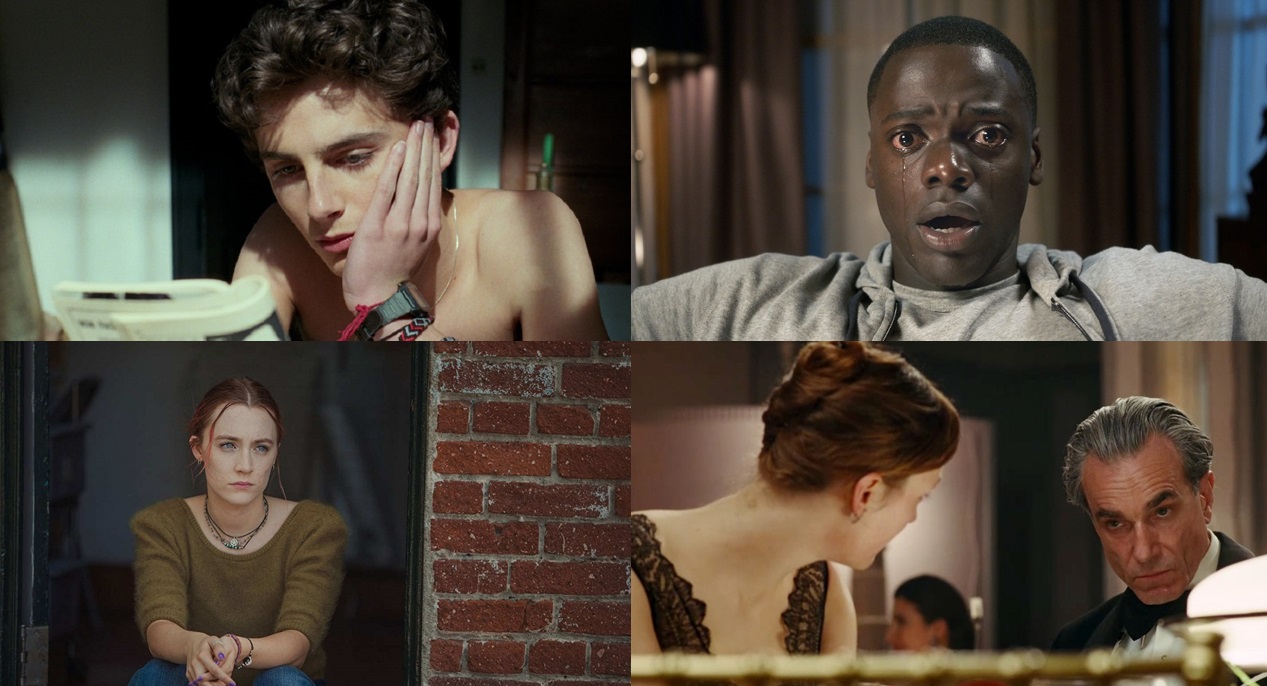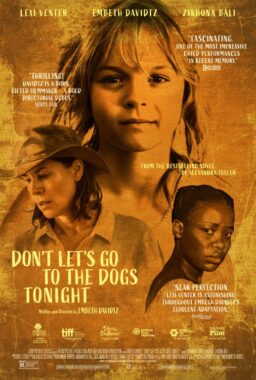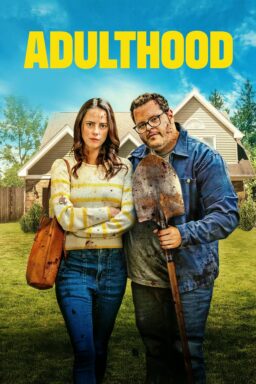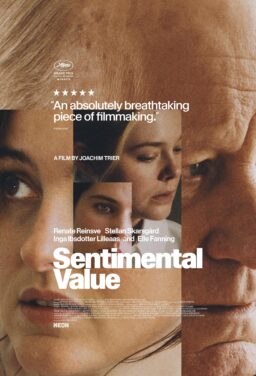As the world grew more divisive in everyday life than it has in generations, people went to the movies in 2017 to escape, and found different ways to do so throughout the year. From all types of filmmaking, there were stories worth celebrating. The arthouse circuit delivered the kind of movies that set social media buzzing while even the blockbuster films of 2017 felt smarter and more accomplished, from “Wonder Woman” to “Dunkirk” to “Star Wars: The Last Jedi.” There was a sense this year that film’s power to unite different types of people was more essential and more accomplished than usual, helped in part by two debut films from clearly prodigious talents, or maybe it was just a greater need to believe that’s true. Our joint top ten list reflects the range of filmmaking of 2017, including both unforgettable debuts and the works of masters like Paul Thomas Anderson and Terence Davies. It’s reflective of the unpredictable array of voices in film and at this site, and a beautiful snapshot of the year in cinema.
About the rankings: We asked our ten regular film critics and two assistant editors to submit top ten lists from this great year, and then consolidated them with a traditional points system—10 points for #1, 9 points for #2, etc.—resulting in the list below, with a new entry for each awarded film. We’ll publish all of our individual lists, along with many more by our regular contributors and some with detailed entries, tomorrow. (Also make sure to check out Chaz Ebert’s lists of the year’s best films and documentaries here and here).
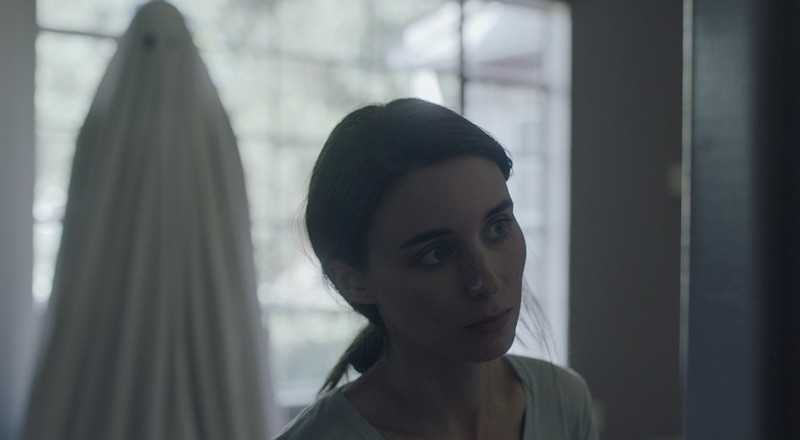
10. “A Ghost Story”
David Lowery’s supernatural drama, if that’s indeed the best thing to call it, feels like something that was dreamt up and then hastily written down moments after awakening before the details faded. A man (Casey Affleck) dies suddenly, leaving his girlfriend (Rooney Mara) bereft; he lingers in the house in non-corporeal form, observing her grief but incapable of consoling her. This is more or less the starting point of Jerry Zucker’s “Ghost,” but “A Ghost Story” immediately goes in its own strange direction by visualizing the hero not as a transparent person or one surrounded by shimmering animated effects, but as a guy in a plain bedsheet with little eyeholes cut out, like a trick-or-treating child.
It’s an inherently comical image, but the movie plays it straight, and somehow this one-joke premise doesn’t feel like a joke, or even as especially funny. The obstruction standing between us and the hero’s face has a Kabuki-like effect, reducing him to a series of gestures plus whatever props and setting happen to be around. We quickly learn that not only do ghosts perceive time differently than we do—as in, barely at all: a day to us might feel like a second to one of them—they seem to have unfettered access to time. And they can communicate with other ghosts seemingly through telepathy (though their conversations are indicated in subtitles). It sounds like I’m making up every single detail of this exceptionally odd film, and that’s a big part of what makes it so special: the sense that one of the oldest stories in the world has been stripped down to its essence and imagined all over again. The peculiar script combines with Lowery’s earnest deadpan direction, thoughtful framing, and aggressively unnerving use of sound and music to create the very inexpensive indie-movie equivalent of a visionary spectacle. The result belongs on a short list, along with “2001: A Space Odyssey” and “Koyaanisqatsi,” of movies that change the way you see everything. (Matt Zoller Seitz)

9. “A Quiet Passion”
“A Quiet Passion,” British filmmaker Terence Davies’ intimate, masterfully stylized biography of the life and career of poet Emily Dickinson, is exhilarating, in part, because it is hyper-stylized. The film is nothing if not mannered, from its declamatory dialogue to its atmospheric cinematography. True, Davies also selectively uses natural lighting, and long takes in order to give us the impression that we are feeling time pass at the same rate as the characters on-screen.
But there’s also a subtle, and exceptionally well-observed tension between quasi-realistic, and hyper-realistic elements throughout Davies’s latest. This is fitting since the film’s version of Dickinson, played by an extraordinarily good Cynthia Nixon, is often torn between expressing, and keeping to herself. Nixon’s heroine is equally sympathetic and compelling because you can see her struggling to find her place in a world that she has alternately pushed herself out of, and struggled to fall back in love with. She has suitors, and considers romantic love, but this version of Dickinson is more concerned with her place in the world, and whether it would be a vain decision to continue to work, to love, or to exist. The movie is not, in that sense, interested in judging Dickinson’s character, as so many works of historical fiction about doomed subjects do. “A Quiet Passion” isn’t even exclusively about understanding the spirit of the woman who created such essential poems as “Because I Could Not Stop for Death,” or “I’m Nobody! Who Are You?”
Instead, the film dramatizes Dickinson’s life in such a way that you become drawn into her home life, her fraught relationship with her family, her creative process, and her personal fears of disappearing. And it’s not just the acting, the dialogue, or even the look of the film that pull you in. There’s such an incredible attention to detail, and deep-rooted investment in the character on display throughout “A Quiet Passion.” I left the theater feeling elated. Finally: a portrait of an artist that makes the creative process—and not just the physical act of making art—look dynamic. (Simon Abrams)

8. “The Florida Project”
When you’re a little kid, you don’t know your place in the world, but that’s okay. Unless you’re terribly precocious and a bit neurotic, you don’t really care about your place in the world. Instead, the world, in your childlike perception, seems like a place where everything is yours. I can’t think of any films in the last 20 years or so that capture this feeling the way that Sean Baker’s “The Florida Project” does.
The purple motel where six-year-old Moonee lives under the intermittent care of her post-teen mom Hailey is called The Magic Castle, but it can’t be anyone’s idea of a Magic Kingdom. Nevertheless, Moonee reigns from there. Every day brings new things to do. New cars to spit on from upper floor landings at another motel. New adult customers to hustle for cones at the ice cream stand. Newish abandoned housing tracts to set on fire. That sort of thing. The poetic realism of the movie is on street level with Moonee and her unsupervised pals, taking in all the dangerous sweetness of their unfettered and feral kiddom.
The movie is about more than that, too. Its name speaks volumes: contrary to what some believed when it was first announced, calling the movie “The Florida Project” wasn’t some kind of “don’t worry, we can’t think of a title” gambit. It’s what Walt Disney called the endeavor that eventually became Disney World. That place, just across the highway from Moonee and friends but as inaccessible to them as Oz, casts its ever-longer shadow over the adult characters in the film.
The loping, summery rhythms of the movie allow the viewer to savor its unusual characters, have-nots who should not arouse our pity but rather our shame. Little Brooklynn Prince is a delight and a heartbreak as Moonee and Willem Dafoe gets to strut both his charisma and compassion as the Magic Castle’s harried manager. The ending turns poetic realism into poetic license, and is a beautiful grace note. (Glenn Kenny)

7. “Personal Shopper”
There’s a scene about halfway through Olivier Assayas’ “Personal Shopper,” his second collaboration with Kristen Stewart, as captivating as she has ever been (and that’s saying something) where Stewart’s Maureen—personal shopper for a rich woman as well as a medium, working on contacting the spirit of her recently deceased twin brother—tries on one of the dresses she has purchased for her boss. The dress is a sheer black affair, with an S&M-type harness underneath. Stewart, who spends most of the film in bulky nondescript sweaters and woolen caps, considers her reflected image with an expression impossible to name. She adjusts the harness, pulling straps forward to give her room to breathe. The boyishly beautiful Stewart suddenly transforms—naturally, without any fuss—into all things simultaneously: beautiful woman, pre-teen tomboy, fetching gamine, beautiful boy. In the background, Marlene Dietrich croons “Das Hobellied,” a fitting accompaniment from one of the most famous androgynes who ever lived. It’s a standout scene, one of the scenes of the year, and yet what does it all mean? In “Personal Shopper,” meaning is almost beside the point. The film is an eerie ghost story, taking place in a landscape of almost total spiritual flux. It’s a mournful contemplation of grief and loss, mortality flickering on the periphery, and Maureen’s attempts (mostly failed) to communicate with the dead gives her a desperate urgency. Nothing is stable in “Personal Shopper”—not jobs, relationships, gender, identity. “Personal Shopper” teeters gloriously in the gap of the perpetually “in-between”. (Sheila O’Malley)

6. “Three Billboards Outside Ebbing, Missouri”
As a political statement about hot-button issues like racism and sexism, Martin McDonagh’s “Three Billboards Outside Ebbing, Missouri” doesn’t really work, which is fine because the filmmaker has other intentions. Nor is this a film that wishes to reside in the viewer’s good graces; it’s as ornery, unforgiving, strict and wily as its heroine, Mildred. Brilliantly played by Frances McDormand, Mildred is the straw that stirs the rage-filled drink McDonagh serves the audience. Her revenge-driven quest for justice is the catalyst for all manner of mischief and carnage, and while she’s ostensibly the film’s protagonist, her avenging angel has far too much devil in her to be above reproach. You want to root for her, but she often makes you sorry you did.
Like much of McDonagh’s work, “Three Billboards Outside Ebbing, Missouri” is not without controversy. Much of the reaction stems from the nonchalance with which he handles the unsavory aspects to which he is repeatedly drawn. Practically everyone in this movie is racist, including Mildred and the Ebbing police department, which is populated by officers who can turn on varying levels of charm. Led by Mildred’s main antagonist, Chief Willoughby (Woody Harrelson) and his lead cop Dixon (an excellent Sam Rockwell), these cops enjoy terrorizing the black population of Ebbing. That is, when they’re not trying to stop Mildred’s billboard protest of her daughter’s unsolved rape and murder. McDonagh treats these developments matter-of-factly, without a comforting nudge to the audience letting them know he thinks it’s wrong. Additionally, he allows for some redemption for the film’s most offensive characters.
But I don’t think McDonagh is trying to troll “woke” people or toss a bone to jaded folks like me who saw these onscreen injustices as “business as usual.” Instead, the goal of McDonagh’s screenplay is to use karma (or perhaps God) in a valiant yet unsuccessful attempt to balance out an unjust universe. Characters are punished for their misdeeds, but when this happens, innocent people are quite often served up as collateral damage. This makes for a fascinating, bleak and pitch-black comic religious allegory, one that is superbly acted and fearlessly unapologetic. (Odie Henderson)

5. “Call Me By Your Name”
You never know what may rise out of the water. As a professor (Michael Stuhlbarg) retrieves submerged statues of sculpted male bodies off the coast of northern Italy, his 17-year-son, Elio (Timothée Chalamet), experiences forbidden feelings that bubble to the surface. He’s become hopelessly smitten with Oliver (Armie Hammer), the loose-limbed, older graduate student living with his family for the summer. Whereas Luca Guadagnino’s 2009 film, “I Am Love,” was fueled by mounting excitement as its heroine broke out of a stifling trap, the director’s latest feature is set in a snug cocoon of safety where Elio and Oliver can explore their mutual infatuation, albeit in empty fields and behind closed doors. Cinematographer Sayombhu Mukdeeprom (“Uncle Boonmee Who Can Recall His Past Lives”), deliberately obscures certain shots—either through blurred focus or overlapping color—causing us to focus on the emotion rather than the details in the frame, and what swooning emotions they are.
This is the most liberating screen romance in many a moon, with a script by James Ivory (adapted from André Aciman’s novel) that is profoundly erotic without ever being explicit. Stuhlbarg, who lends his deftly nuanced presence to two stories of forbidden love this Oscar season, delivers an unforgettable monologue in which he cautions Elio from protecting himself to the point where he “feels nothing.” Sufjan Stevens supplies two original songs that indelibly capture the lingering aura of remembered passion. Hammer hasn’t been this exuberant onscreen since “The Social Network.” But this is Chalamet’s film, and his performance is one for the ages, navigating the tenuous line between adolescence and adulthood. Ingmar Bergman once dubbed the human face “the most important subject in cinema,” and Chalamet’s face—lit by the warmth of flickering memories—is everything. (Matt Fagerholm)

4. “Mudbound”
Often as difficult to watch as “12 Years a Slave,” “Mudbound” might be a World War II epic firmly rooted in our country’s disgraceful Jim Crow era of segregation that unfolds in the Mississippi Delta. But its depiction of racial hatred, intolerance, misogyny and inherited ignorance unfortunately feels all too contemporary with the rise of neo-Nazis and the repercussions following the ugly violence this past summer in Charlottesville. As the movie opens, a character who will be revealed as monstrously evil and profoundly rotten is about to be buried during a raging rainstorm. But the stench of what he represents can’t be washed away as it permeates the entire film and even lingers beyond the screen.
Director Dee Rees, who also co-adapted the script based on Hillary Jordan’s novel, is not so much interested in issues as she is with people who are struggling to survive and striking uneasy bargains to do so. The lives of the white McAllans (headed by Jason Clarke and Carey Mulligan), and the black Jacksons, their tenants (Rob Morgan and Mary J. Blige), become intertwined as they try to farm the godforsaken land they both share. Mulligan and Blige also form a mutually beneficial bond, a safety net against sexist attitudes of the time and their husband’s flaws in judgment.
But the most fascinating though fragile relationship forms between Mulligan’s brother (Garrett Hedlund) and Morgan and Blige’s son (Jason Mitchell, the film’s MVP), war heroes tortured by the horrors they have seen and clinging to someone who understands. Like several other year-end movies, Rees mostly eschews treating her characters as either good or bad. Instead, they all get a chance to state their point of view and their frame of mind in shared voiceovers that join together as a kind of Greek chorus. “Mudbound” might not always be elegant in its storytelling, but the resulting messiness offers essential insight into who we are now. (Susan Wloszczyna)

3. “Get Out”
The most dazzlingly original and purposely provocative American dramatic film of 2017, Jordan Peele’s critical and commercial smash started the year off with a startling bang by cross-wiring two normally distinct genres: horror and social satire. Early on, when the latter dominates, we could be in a progressive racially-themed movie from the ‘60s, a “Guess Who’s Coming to Dinner” cleverly flipped to favor the African-American’s perspective. Young black photographer Chris (Daniel Kaluuya, in a very assured and appealing performance) and his girlfriend Rose (Allison Williams) leave New York to visit her parents in the leafy, prosperous suburbs up north. Though the shock of hitting a deer on the highway presages shocks to come, there’s mostly drolly discomfiting amusement in how subtly weird Rose’s nominally welcoming family, with their too-friendly black servants, appear to Chris. A party they throw includes a panoply of self-satisfied white liberals, who all have great things to say about Obama and Tiger Woods, but also a lone black guest who shouts “get out!” to Chris before passing out himself.
A question to ask friends: at what point does the movie shift decisively from satire to horror? That there’s no clear, obvious answer is a tribute to Peele’s ingenuity and skill in blending the two. The film is beautifully directed, with a nuanced color palette and expressively fluid camerawork. When the shift into horror does arrive, the movie’s art-film look makes it all the more seductive and powerful. And the nightmarish visions that occupy the tale’s final act couldn’t be more purposeful. If the satiric sections suggest a superficial gloss on current racial relations, the darker elements take us much deeper, all the way back to the brutalities of slavery that still undergird American experience. There could hardly be a better to movie to begin the year when America’s first black president was replaced by one who appeals to white supremacists, further proof that history is anything but a continuous forward march. (Godfrey Cheshire)
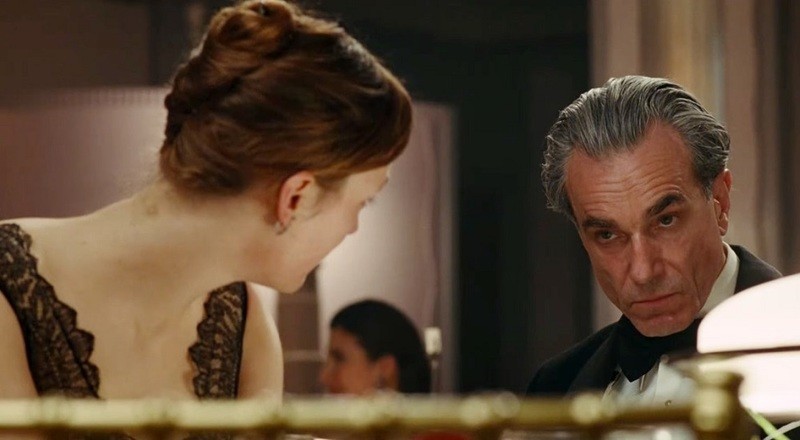
2. “Phantom Thread”
Much like David Lynch’s “Twin Peaks: The Return” often felt like it was mocking the kind of thinkpiece that wants to analyze art to death, Paul Thomas Anderson’s “Phantom Thread” often feels like cinema that blissfully refuses to offer simple answers to the questions it asks. Even when asked by friends what it’s about, I struggle to provide concrete replies. On the surface level, it’s about a fashion designer (Daniel Day-Lewis) who is so controlling and particular that he can’t let anyone in his life other than his sister (Lesley Manville). He thinks he wants someone beautiful at his breakfast table, and finds that person in a waitress named Alma (Vicky Krieps), but he can’t stand how loudly she butters her toast. Now, that’s just the foundation of a story that plays with issues of control, gender roles, perfectionism, co-dependency and more.
And, oh, how wonderfully it plays. Directing (and shooting as an uncredited cinematographer) his own script, Anderson further cements his status as one of our most confident, talented filmmakers with every sumptuous frame. Just as a study of the way men and women come together and pull apart—especially when one of them is a creator—“Phantom Thread” is fascinating, but it’s also a gorgeous film to look at, as perfectly crafted as its protagonist’s famous designs. Of course, it gains another level when one considers that two of our most finely-tuned artists in Anderson and Day-Lewis are arguably examining their own, well-reported perfectionism.
“Phantom Thread” is the kind of masterpiece that gets better the more you roll it around in your brain and play with its themes. Its final image and line are the kind of thing people will be dissecting for years, making you instantly want to see it all again. And it’s one of the film’s greatest strengths that so many of them will interpret it differently. (Brian Tallerico)

1. “Lady Bird”
One of the loveliest parts of “Lady Bird” is the fact that Lady Bird herself isn’t lovely all the time. In her solo feature filmmaking debut, writer/director Greta Gerwig shows she has enough confidence in herself to come up with a character who’s complicated and flawed, often selfish and narcissistic, as teenagers tend to be. But Gerwig clearly has deep affection for this young lady, played with subtlety and vulnerability by the endlessly versatile Saoirse Ronan. Semi-autobiographical in nature, “Lady Bird” feels deeply personal—it’s the kind of role you could easily imagine Gerwig herself playing a decade ago—yet it’s so authentic as it reveals angsty, adolescent truths that it becomes universal.
Lady Bird, as she calls herself (the character’s real name is Christine), is a high-school senior searching for her place in the world and trying on various personae, which aren’t always the right fit. She longs to fly far away from her mundane hometown of Sacramento, CA, for the bright lights and intellectual heights of New York City. But she’ll have to gain some perspective—and some appreciation of where she comes from—before she goes. As the parents who support Lady Bird throughout her insecurities and cruelties, Laurie Metcalf and Tracy Letts bring a grace and humanity that seem effortless. Gerwig offers some coming-of-age-film tropes that may seem familiar. Lady Bird briefly abandons her best friend (Beanie Feldstein, showing perfect comic timing) for the mean girls and a too-cool boyfriend (the great Timothée Chalamet). Ashamed of her house and family, she pretends to live on the wealthy side of town. But Gerwig always finds a new avenue into these narrative elements, making them feel fresh and true. The best film of 2017, “Lady Bird” bodes well for a long and fruitful career for Gerwig behind the camera as well as in front of it. (Christy Lemire)
